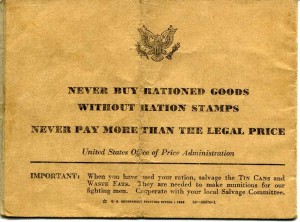Something curious happened during the summer of 2008. Democrats, led by Speaker Nancy Pelosi,
shut down the House and C-SPAN cameras with a resolution that passed by just one vote, smack in the middle of an energy crisis. Afterwards, Madame Speaker jetted off on a week-long book tour while gas prices soared.
The Republicans stood in the dark and refused to leave. A few officials, including John Culberson, took out their phones and began Twittering the action to America, this spawning the #dontgo movement. It was the first nudge to the hibernating conservative constituency who were excited about having something over which to be excited in their party. Netroots activists seethed at the realization that Democrats left America in limbo rather than vote against reducing energy costs and drilling stateside – though the majority of the population approved of such. They rallied around the legislators that had the brass to stay and urged them to “Don’t go!”

Democrats shut down Republicans a second time promptly after the election by moving to bar them from amending legislation in the House.
Taxpayer fury over these offenses grew to a shriek in February when Rick Santelli delivered his famous diatribe on the floor of the Chicago exchange. The feelings of angry disenfranchisement felt by so many conservatives coalesced following Santelli’s speech. The first wave of tea parties came from this, the first national effort occurring on February 27th, 2008. I was at St. Louis’s very first tea party and stood across the mighty Mississippi on the Arch steps with a bunch of wide-eyed, virgin protesters who were just as shocked as I was to see the amount of people who had assembled.
We’ve kept the movement growing, too. Nationwide demonstrations on April 15th with a bunch of smaller ones peppered in between have raised awareness of government trespasses; the email distribution lists have grown; the flash protests have swelled in size; more people now than ever are reading the legislation that their officials can’t be bothered to read. The administration relented and addressed us this past spring as we protested outside the president’s town hall in Arnold, Missouri. He invited us to meet with him. We accepted, we sent him a certified letter of acceptance and thanks, he never replied.
Conservatives exhausted the phone lines and keyboards contacting their representatives to alter their vote on the stimulus, cap and trade, and other legislation. Leaving messages with clueless aides wasn’t enough. Receiving canned email responses which did nothing to address voter concerns wasn’t enough.
It only validated what we all knew anyway: Washington wasn’t listening.
We conservatives, still stinging from the Patriot Act and the Wall Street bailout of the previous administration, were furious. If our elected officials were too busy frittering away our taxpayer dollars to take our calls and emails then Katy bar the door: “we the people” would march to their offices.
One of the first town halls was that of Claire McCaskill; she and Americans for Prosperity arranged a make-up “listening session” for conservatives with her aides after her University City office staff had a melt down when constituents marched to the Senator’s office and tried to speak with the her. Staffers responded by bolting the door, drawing the blinds, and calling the cops. The listening session was specifically for those citizens who felt excluded and the result was an endless stream of polite, but impassioned citizens who raised their voices and pointed their fingers towards McCaskill’s aide Michelle Sherrod. Video of this, taken by myself and Jim Hoft, went viral.
Conservatives stormed town halls across the country as their officials arrived home for recess. We lined up and blasted our representatives for forsaking us and the Constitution. We expressed outrage at the lack of debate concerning the health care proposals. When our officials went into hiding, like Russ Carnahan did, some of our like-minded conservative brethren plastered fliers featuring the MIA legislators on the back of a milk carton.
Democrats feign shock; they can’t possibly imagine the cause of so much fuss. Hand them their smelling salts. They bemoan the “rudeness” of the loud town halls while lying to constituents about portions of the health care legislation, bussing in plants, and supporting SEIU members who beat down dissenters in the parking lot seemingly on their orders. They’ve called us “unAmerican,” “evil-mongerers,” “silly,” “an angry mob,” “terrorists,” and that what we’re doing “borders on treason” – all which seems truly rude if we’re defining rude behavior. Their only defense against this strong, informed citizenry is to brush them off as kooks and they’ve leaned heavily on the mainstream media to do so.
Just one problem: conservatives are bypassing mainstream media. Conservatives blogs are on the rise and media is loathe to admit that we’re dominating social media networks and the best sellers’ lists.
The collective consciousness of half the country’s population has changed: we stopped measuring our validity and successes by the media and by our enemies’ criticisms. We embraced the spirit of the underdog. We realized that GOP is not synonymous with conservatism. Some of us are preparing to run for offices ourselves, we’re launching our own conservative groups and organizing petitions, rallies, and lobbyist efforts all around the country.
The tea party movement has challenged the GOP to get back on track or risk losing its grip on the right wing. It’s reminded Democrats that a slick marketing campaign coupled with paid activism isn’t the same as a groundswell of real change and the reason that Democrats are so hostile towards it is because they’ve never before encountered it.
This movement celebrates its last big hurrah of 2009 before marching headlong into a midterm year. The tea party is far from over and for the sake of checks and balances, I hope it never ends.
COMMENTS
Please let us know if you're having issues with commenting.